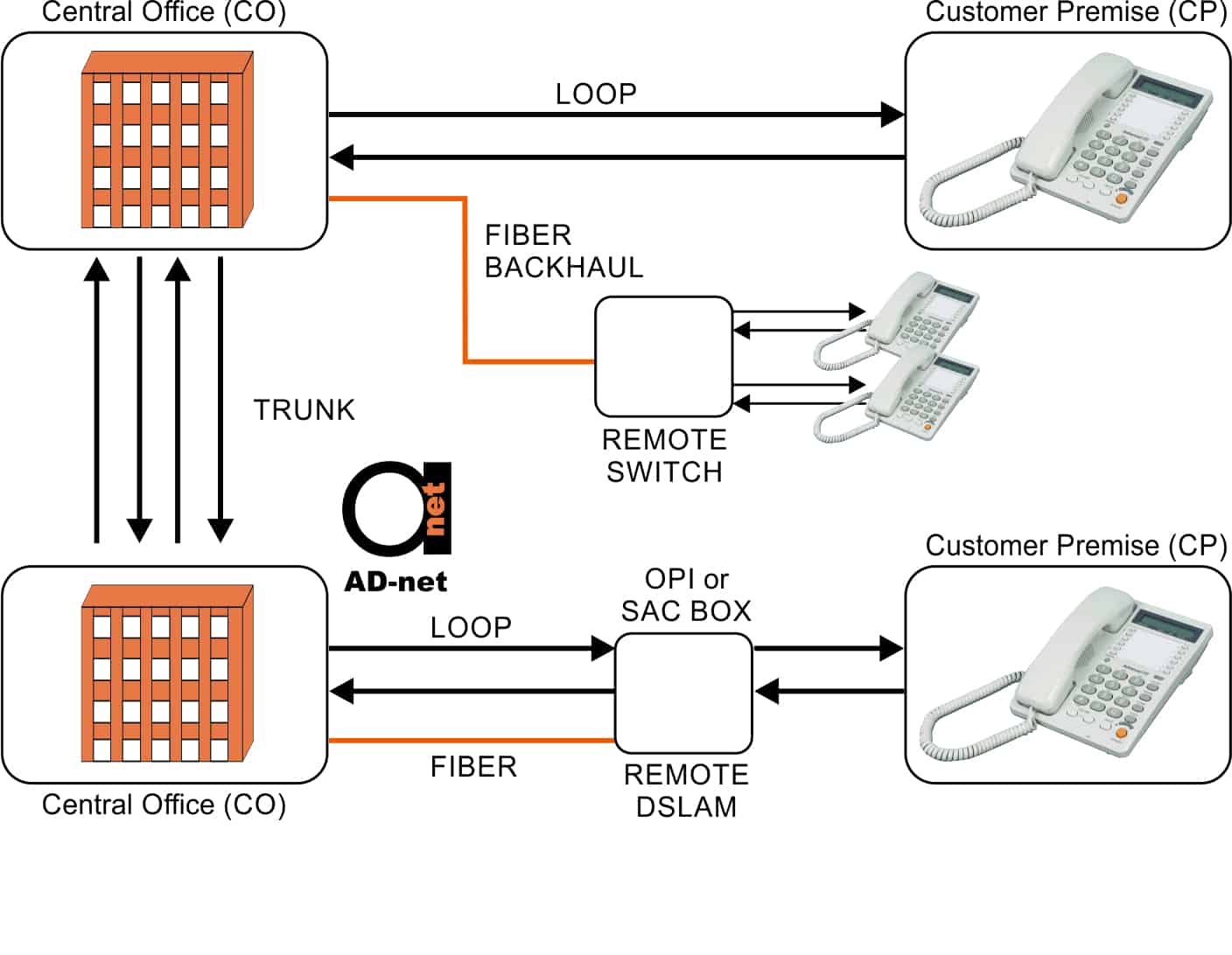In our article few days ago where we talked about Loops and Trunks & Circuit switching, we finished our article on discussing concepts for CO, and how it were made since the most humble beginnings of telecom and PSTN networks.
Today, let’s delve deeper, and define CPE’s, and also introduce DSL and DSLAM’s concept in the Outside Plant.
Remotes
The model for the telephone network shown in this article was used up to the end of World War 2. With the suburban sprawl that followed the war, it was however not cost-effective anymore to build COs every 8 km / 5 miles.
New subdivisions were then served from remote switches, simply known as remotes. These low-capacity switches were installed in underground controlled environment vaults, or small above-ground buildings. As shown in figure below, the remotes provide telephone service on copper loops in the subdivision and a fiber backhaul is used to connect these back to the nearest big CO.

Figure 1: Fiber Backhaul for building remote switches and CO’s.
Now, this is already more interesting, and we particularly love everything that is related to and around fiber, and while this scheme is a bit simplified to show you a concept of remote switches via fiber backhaul, one of the products that immediately will come to your mind is our Voice PCM Fiber Multiplexers range,
In this case, there will be more “boxes” in above scheme, you usually will need FXO (CO) type fiber multiplexer to connect trunk lines at CO side, and FXS unit at remote side, so scheme for such fiber extensions for example for 30 lines will look like this:

Figure 2: AD-net’s E1, Ethernet and E1 fiber optical mux.
You can see that you have 2 muxes, basically at the bot sides of extension fiber. Our muxes besides 30 and more phone lines can send over same fiber also Ethernet, E1 and even RS-232 serial ports, thus making serious economy on fiber renting and laying costs.
Thus, the remote uses electronics and optics to connect fiber to copper wires, thus
taking information received over the fiber and transmitting it to a residence over a copper loop, and vice-versa.
DSL and DSLAMs in the Outside Plant
Modem technology called Digital Subscriber Line (DSL) started being deployed in the 1990s. ADSL uses existing copper loops to connect a modem at the customer to a modem in the CO. DSL allows high speed Internet access to coexist with telephone services on a single loop.
To increase the bit rate that can be achieved, the network side modem was moved into the neighborhood to decrease the distance between the modems. This modem is contained in a device known as a Digital Subscriber Line Access Multiplexer (DSLAM).
The equipment, wiring and transmission systems carrying trunks in neighborhoods is collectively known as the outside plant. This remote DSLAM is usually installed in a small enclosure that is secured to the side of a larger enclosure called a Serving Area Concept (SAC) box, or an Outside Plant Interface (OPI).
The SAC or OPI is a wiring connection point in the neighborhood where wires in distribution cables running down streets are connected to wires in a feeder cable from COs. It is also used to connect the network-side DSL modem to the existing copper loop. Power and fiber-optic cables are then used to connect the remote DSLAM to the CO, and from there to the Internet.
The remote switch and remote DSLAM are generic fiber terminals, i.e. the fiber ends at them.


